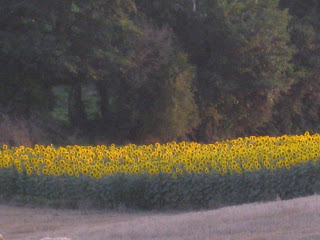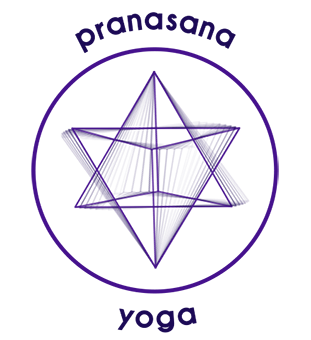Allergies can develop at any age and are often inherited. They affect people throughout the year at any time, depending upon the local environment and the triggers that cause the problem. An allergic reaction occurs when a person’s immune system attacks a foreign substance known as an antigen, (such as pollen or dust) that is harmless to the majority of people. This alerting is due to over sensitivity, developed over a period of time. When allergens react with the over produced antibodies, this catalyses the release of further chemicals, including histamine, that cause the allergic reaction and associated symptoms. This subsequently leads to inflammation, as surrounding tissues are destroyed along with the antigen. Every time the allergen is reintroduced in to the body, the immune system triggers the same defensive and inflated reaction.

Allergic Conditions
Allergens, are introduced into the body in various ways which include breathing, ingestion, skin contact, through mucous membranes or by injection. Common reactions include asthma, eczema, hay fever, conjunctivitis, hives, congested and inflamed nasal passages and respiratory tract, dermatitis, sunburn, food
allergies, reactions to insect stings and animal proteins like dander. such conditions are triggered by the following allergens; pollen, mould, house dust mites, foods, cosmetics, animal hair, environmental conditions like temperature and light, poisonous plants, medicinal drugs and vaccines, insect spores and stings, bacteria, viruses, latex and metals.When allergens enter the blood stream they mobilise and in so doing, can cause allergic symptoms in remote sites anywhere in the body; particularly the lungs, nose, skin, stomach and eyes. The ever increasing pace of life means that stress and pollution also play a key role in affecting our nervous and immune systems and how they deal with maintaining healthy equilibrium. stress taxes the body, raising the pulse and blood pressure, releasing adrenaline and increasing tension within the connective tissues.
We know this as the fight or flight response. such conditions are not healthy when the body no longer knows how to switch off and replenish itself through the relaxation response.
Symptoms
Symptoms of allergy include inflammation, irritation, burning, stinging, sneezing, blisters, rashes and itchiness, skin discolouration, wheezing, coughing, shortness of breath, difficulty swallowing, pressure and pain, running, oozing, cramps, abdominal pain, nausea, vomiting, diarrhoea, colitis
and other gastrointestinal problems, anxiety, restlessness and confusion, fever, racing pulse, increased or decreased blood pressure, blurred vision, weakness, dizziness, fainting, organ system failure and life threatening shock. All of these symptoms are the body’s means to protect itself. It is either attempting to
remove the allergen or prevent more from entering.
How Yoga Practice Helps
Apart from any possible avoidance of allergens, a balanced diet and using medication to relieve symptoms, combine all of these with regular practice of asanas and pranayamas. If allergy is an ‘overreaction’ to stimulus, then by deduction, any practices that help one to relax are highly beneficial.Asanas make the body strong and light. They teach it about stress, relaxation and their relationship with gravity. On a deeper level the intellect begins to recognise its nature as one that gravitates towards the divine, despite the movement of the world. Pranayama teaches one how to breathe fully, absorb increasing amounts of oxygen and remove stagnancy. It improves all systems and functions within the body-mind, creating an enhanced synergy. The breath cycle lengthens and slows down, which facilitates deep rest, immunity and therefore vitality. An interesting point to note is that often the postures or breathing techniques prescribed for specific ailments are not easily accessible during stressful periods. It’s easy to say ‘do specific nostril breathing’ to cure your allergies, but how do you do that if your nose is blocked and your mind is stressed, feeling congested or stuck as well? The trick is to do what you can when you are feeling inspired. Yoga is not a quick fix, but the longest and most durable investment plan available. The student will begin to recognise themselves as a soul in a body, rather than an ego that overreacts to all stimuli and which constantly requires stimulation in order to avoid the blissful stillness of being. sun salutations – build heat, strength and elasticity, which prepare the body to move safely into deep and maintained asanas. Shoulderstand – promotes the slowing and deepening of the breath, strengthens, cleanses and revivifies the entire system, making one feel very light.
Backbends
Pigeon, cobra, bow, bridge and fish ~
These all open the front of the body, allowing the breath to move deep in to the belly, expand the chest and open the lungs; moving into front, back and sides of the body. This increases elasticity, strength and general confidence, as the practitioner moves the breath through the vital centres.
Breath / Energy Work (Pranayama)
Kapala Bhati (Skull Shining Breath) This is a dynamic exhalation followed by a pause and passive inhalation. This promotes deeper breathing as it directs the vital current to the lower belly. This is an easy technique to perform and incredibly cleansing, strengthening, calming and centering. It cleanses the blood, all of the abdominal organs, aerates the lungs and exercises the heart gently.
Bhastrika (The Bellows) – the reverse of Kapalabhati; being a dynamic inhalation and passive exhale (or some people like to make the exhale dynamic as well). The Bellows Increases the lung and heart energy, circulating vast quantities of fresh oxygen around the body. It also cleanses the blood and removes impurities as the air mobilises and balances the three doshas and it centres the mind and transmutes and directs the vital force upwards to the higher centres. This all leads to resounding health.
Ujjayi (The Victorious Breath) – breathe in and out through the nose, passing the air through the back of the throat, down into the heart, lungs and then deep into the centre of gravity below and behind
the navel. Allow the hissing sound (heart ‘hhaaa’ and lungs hhsssss’) to move downwards as awareness expands. ujjayi is the fundamental breath of meditation and so when practiced regularly is a boon to allergies in itself.
Anuloma (With the Natural Flow) – This is the restricted exhalation of the breath through one nostril (and then alternating), or both nostrils simultaneously. This is followed by inhaling through both. This strengthens
the heart, lungs, diaphragms and all other breathing muscles, allowing the body-mind to adapt to constriction.
Brahmari – (Bumble Bee) Brahmari is a large bee and so this technique assumes the humming sound that it makes. breathing is through the nose and a gentle ‘mmmmmmm’ humming is vocalised within the throat with the exhale. The effects are very calming for both mind and nerves and this allows for restoration as opposed to the sympathetic nervous fight and flight re-action.
Retention – introduce breath pausing and then holding as practice advances, to increase awareness, cleansing and energy cultivation.
Yoga Nidra and Meditation – deep wakeful restoration provided by yogic sleep and meditation, heal and awaken the aspirant to their higher being; the inner spark which lives beyond time, without fear and need. Yogic tradition believes that all problems are healed through meditation, as union with the divine invites grace.Remember; do what you can, not what you can’t. Healing starts with meeting reality as it is. Detachment leads the mind to wisdom, which lights the path to peace. For more guidance or information regarding contraindications, you can email [email protected]. The ‘How To Breathe’ course book and DVD series is available here.
For help with Nasal Allergies have a look at the Sinus Rinse here – it works very well 🙂
Yoga For Allergies by Matt Gluck was published in Yoga Magazine in about May 2010.
